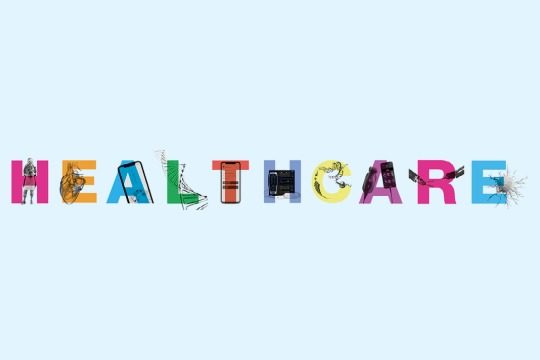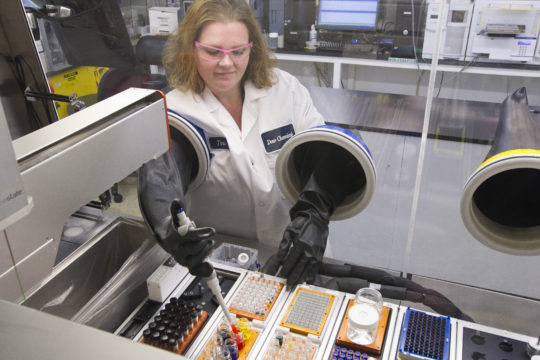


As summarized in Funding the Future: Investing in Long-Horizon Innovation1, returns to successful R&D are often significant and can be transformational for an organization. However, R&D spending (especially long-horizon R&D project spending) tends to be among the first places management teams cut when faced with short-term financial pressures. While companies can make a variety of changes across their strategy, governance, engagement, and incentive plans to combat this short-term behavior, investors, too, have a significant role to play in encouraging a more balanced approach to R&D investment.
As an investment firm privately and wholly owned by its partners, Baillie Gifford thinks in decades, not quarters.2 This investment philosophy has been applied across the firm, manifesting itself in the management of the firm itself as well as in the way capital entrusted to Baillie Gifford’s care is managed. Its Worldwide Health Innovation Fund is no exception, believing that seeking and holding good ideas at an early stage is far more important than maintaining a strict sell discipline or obsessing over near-term valuations.3 Health care companies can have projects with very long lead times and a high probability of failure, but the few that succeed often develop transformational breakthroughs which not only improve health outcomes for large segments of the population but also generate exponential returns. As such, remaining patient and supportive during volatile periods is crucial.
These long-term investment philosophies within the Worldwide Health Innovation Fund closely relate to many of the tools and solutions to funding R&D that were highlighted in FCLTGlobal’s recent report.
As a uniquely positioned private partnership, Baillie Gifford has long championed the virtues of patience, trust, and experimentation in their investment philosophy. As investment manager Julia Angeles states, “idea generation is a very creative process, there not a formula for that. It is this freedom to investigate what you want without being forced into short-term performance objectives that allows room for experimentation and innovation.” Hence, the Worldwide Health Innovation Fund is different from many portfolios in that it does not have a target for capital deployment, nor any deadlines: ideas are thoroughly researched and the plan is to often own these companies for decades instead of quarters so there is less pressure to make money immediately.
It goes without saying that to put such ideas in motion, Baillie Gifford needs an immense amount of trust from its clients. Developing a reputation for long-horizon investments and cultivating trust takes decades to build, and it is precisely because of this reputation of that a lot of prospective clients and companies proactively seek out Baillie Gifford as an investment partner. Baillie Gifford informs clients ahead of time that strategies like the Worldwide Health Innovation Fund will have more volatility by design – and most, if not all of their clients signed up for that. Having an impatient or overly risk-averse client base can slow down the investment process and even ruin the investment strategy.
Consistent with the philosophy that transformational R&D projects generate the greatest source of long-term revenue, another of the Worldwide Health Innovation Fund’s tenets is their investment philosophy with respect to asymmetric returns. As investment manager Marina Record explains, the philosophy is based on research that stock market returns are driven by only a small percentage of companies.4 Thus, “we look to invest in companies that have that outlier potential to drive returns of the entire portfolio. Position sizes reflect our view of the scale of the opportunity and chances of success.”
Due to the skewness and long-dated nature of the positions, investments in the health care sector can be seen in an optionality mindset, where the portfolio is like a series of long-dated out-of-the-money call options. Individually, each option (company) may have higher risk and take longer to realize a gain but is offset by their significant upside potential. Overall, at the portfolio level, the payoffs of the few large successes far outweigh the losses of the less-successful investments.
One source of friction highlighted in the Funding the Future was that long-horizon R&D project spending faces a unique set of short-term pressures, including managerial and investor myopia. As companies grow, they face an inherent tension between growing the already-successful part of the business (the franchise) versus developing high-risk, early-stage ideas (the moonshots).5 Put differently, many companies are forced to abandon their pipeline of moonshots (the very process that got them there in the first place) in favor of scaling up and commercializing existing products to satisfy market expectations. Here, investment manager Rose Nguyen shared the perspective that Baillie Gifford’s role is to “step in to provide patient capital when it is most needed so that R&D doesn’t get abandoned, for that is really the role of long-term investors.” Nguyen continues by noting that they would often share stories of how other portfolio companies have dealt with building scale while managing to stick with an innovative culture.
At the same time, however, Nguyen warned that “falling in love with the artists” could take you too far down the other extreme. In many ways, the problems investors face are similar to the problems companies face: a large opportunity set spanning the spectrum from early–stage start-ups to established late–stage firms. It is imperative that investors think about the right portfolio balance the same way a company balances their own R&D portfolio: early-stage firms with lower probability of success but significant return potential warrant a smaller position, just like a company’s allocation to transformational R&D, while companies with proven technologies and significant market potential are less risky and warrant a larger position, similar to corporate allocation to core and adjacent R&D. This dovetails with our own research, which shows that while you need some moonshots in the portfolio, it is also both impractical and suboptimal to have a portfolio comprising entirely of moonshots. A balanced portfolio requires appropriately sized allocations in not only transformational, but also core and adjacent R&D projects.
Through its corporate culture towards fostering creativity, supportive engagement with moonshot companies, and investment philosophy grounded in patience and asymmetric returns, Baillie Gifford has set the standard as long-term investors and are actively helping companies to take a more balanced approach to R&D investment.
1. Funding the Future: Investing in Long-Horizon Innovation, FCLTGlobal, 2020, https://www.fcltglobal.org/wp-content/uploads/Funding-the-Future_FCLTGlobal-1.pdf.
2. For more on Baillie Gifford’s philosophy, see https://www.bailliegifford.com/en/uk/about-us/actual-investors/.
3. “Health Innovation Strategy,” Baillie Gifford, 2020, https://www.bailliegifford.com/en/ireland/professional-investor/literature-library/institutional-only-literature/philosophy-and-process/health-innovation-philosophy-and-process/.
4. See Bessembinder, Hendrik. “Do stocks outperform Treasury bills?.” Journal of financial economics 129, no. 3 (2018): 440-457. https://www.sciencedirect.com/science/article/abs/pii/S0304405X18301521.
5. See Nguyen, Rose. “The lure of the loonshot,” Baillie Gifford, 2020. https://actually.bailliegifford.com/the-lure-of-the-loonshot/.

Governance | Article
18 September 2020 - Research from FCLTGlobal and others confirms that long-term companies outperform on financial metrics, including revenues, profitability, and stock price, as well as non-financial ones like job creation and sustainability.

Investor-Corporate Engagement | Article
29 October 2018 - Global companies recognize the many advantages to creating a long-term plan which sets out a clear forward-looking perspective on growth, risk and capital allocation for investors.

Innovation | Report
9 August 2020 - R&D spending, especially long-horizon R&D project spending, faces a unique set of short-term pressures relative to other types of long-term investment. When facing short-term financial pressures, behavioral biases including manager risk aversion and uncertainty around forecasting potential future returns (among other things) lead to a tendency among management teams to cut long-horizon projects first. The declining tenure of managers, the lack of innovation-linked metrics in incentive compensation plans, the typically asymmetric return profile of long-horizon projects, and an investment community that often ignores the potential impact of long-horizon innovation spending in a company’s valuation analysis all contribute to this...